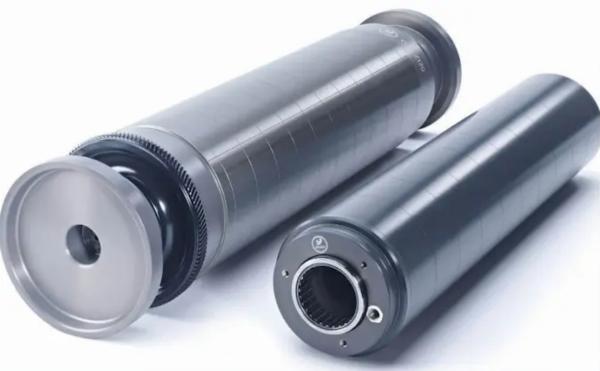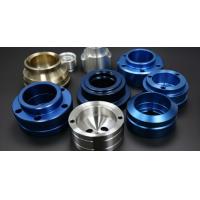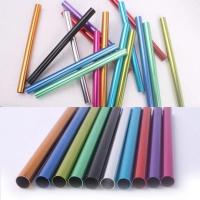Alumimum hard anodizing metal surface treatment technology
Improving surface hardness of machinery electronics parts
Definition of hard anodizing
Hard anodizing is an advanced metal surface treatment technology.
By performing anodizing electrolysis on the metal workpiece in a
specific electrolyte, a dense and extremely hard aluminum oxide
ceramic film is formed on its surface. This film not only has
excellent wear resistance and corrosion resistance, but also has a
strong bond with the base metal and is not easy to fall off. It is
widely used to improve the wear resistance, corrosion resistance
and surface hardness of metal parts, such as aviation, automobiles,
machinery, electronics and other fields.
Differences between hard anodizing and ordinary anodizing:
1. Film thickness: The thickness of ordinary anodizing film is
relatively thin; the film thickness of hard anodizing is generally
>15μm, which is too low to meet the hardness ≥300HV requirement.
2. Surface state: The surface of ordinary anodizing is smoother,
while the surface of hard anodizing is rougher (microscopic,
related to the surface roughness of the base).
3. Different porosity: ordinary anodizing has high porosity; while
hard anodizing has low porosity.
Process flow of hard anodizing
The process flow of hard anodizing mainly includes three links:
pre-treatment, anodizing, and post-treatment.
Pre-treatment mainly involves cleaning, degreasing, and rust
removal of metal workpieces to ensure that the surface of the
workpiece is clean and free of impurities.
Anodizing is to place the pre-treated metal workpiece into a
specific electrolyte for anodic electrolysis to form an alumina
ceramic film on the surface of the workpiece.
Post-treatment involves cleaning, drying, and sealing the anodized
workpiece to improve the corrosion resistance and wear resistance
of the film.
Hard anodizing technology has the following significant
characteristics:
1. High hardness: The hardness of the hard anodized film can reach
HV2000 or above, which is much higher than the hardness of the
ordinary anodized film.
2. Good wear resistance: Due to the high hardness and dense
structure of the hard anodized film, it has good wear resistance.
3. Strong corrosion resistance: The hard anodized film has
excellent corrosion resistance and can be used for a long time in
harsh environments without damage.
4. Strong bonding: The hard anodized film layer is firmly bonded to
the base metal and is not easy to fall off.
5. Environmentally friendly and pollution-free: No toxic or harmful
chemicals are used in the hard anodizing process, and it does not
pollute the environment.
Application fields of hard anodizing
Hard anodizing technology is widely used in aviation, automobile,
machinery, electronics and other fields.
In the aviation field, hard anodizing technology is used to
manufacture key components such as aircraft engine blades and
turbine discs to improve their wear resistance and corrosion
resistance.
In the automotive field, hard anodizing technology is used to
manufacture automobile engine pistons, valves and other parts to
improve their wear resistance and service life. In the mechanical
field, hard anodizing technology is used to manufacture various
precision mechanical parts, such as molds, cutting tools, etc., to
improve their surface hardness and wear resistance.
In the electronics field, hard anodizing technology is used to
manufacture electronic products such as semiconductor devices and
integrated circuits to improve their insulation performance and
stability.
Type
Broaching, DRILLING, Etching / Chemical Machining, Laser Machining,
Milling, Other Machining Services, Turning, Wire EDM, Rapid
Prototyping
Micro Machining or Not
Micro Machining
Size
Customized SizeClient's Drawings
Surface treatment
PaintingPowder CoatingPlatingPolishing
Drawing Format
2D/(PDF/CAD)3D(IGES/STEP)
Service
Customized Packing, Assembly







